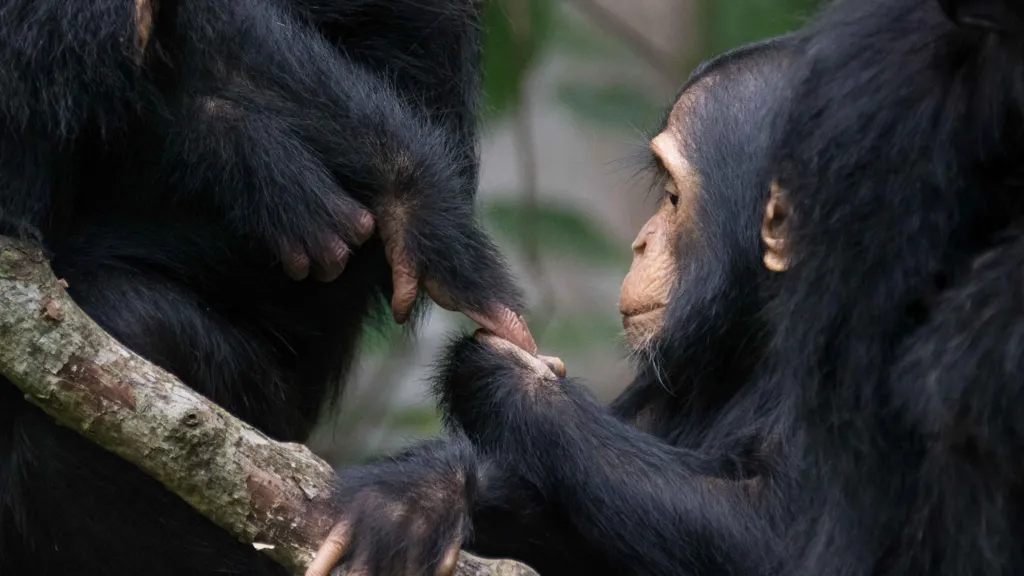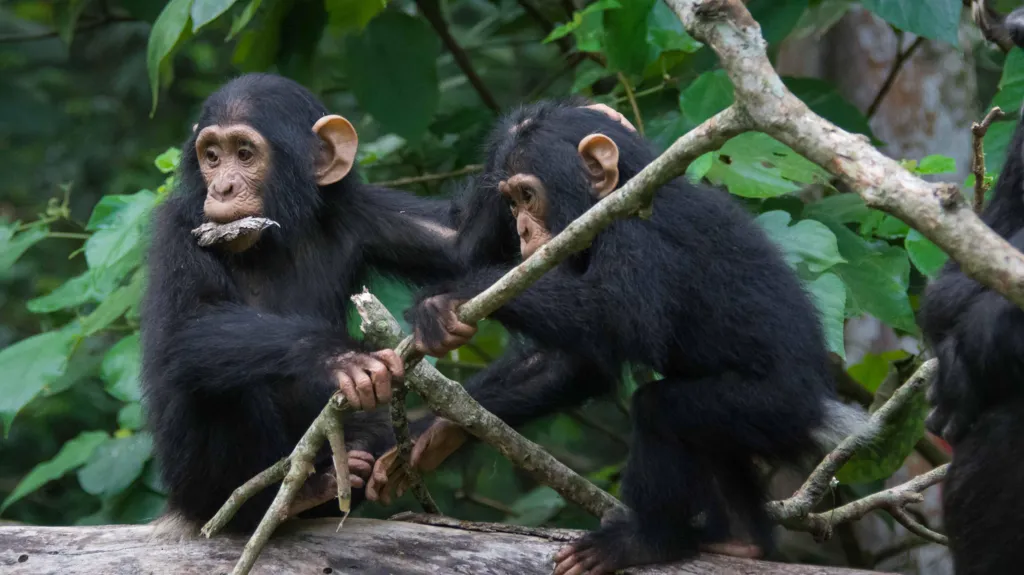Wild chimpanzees engage in surprisingly sophisticated conversations, much like humans, with quick turn-taking and occasional interruptions. Their communication, primarily through gestures and facial expressions, reveals deep evolutionary similarities with human interaction.
Scientists found that chimpanzees, like people, wait only a fraction of a second before taking their turn in a conversation. This “fast-paced turn-taking” is a notable feature of human dialogue, where participants generally wait about 200 milliseconds between turns. Professor Cat Hobaiter from the University of St Andrews explained to BBC News that this pattern shows “deep evolutionary similarities in how face-to-face conversations are structured.”
A millisecond is one-thousandth of a second, and previous studies have shown cultural variations in turn-taking speeds. For example, Japanese speakers typically take around seven milliseconds to respond, while Danish speakers wait about 470 milliseconds. By analyzing thousands of interactions among wild chimpanzees, Prof. Hobaiter and her team discovered that their conversational timing was remarkably similar to humans, though with a wider range. Chimpanzee responses varied from as quick as 1,600 milliseconds before a gesture ended, to as long as 8,600 milliseconds.

The range in response times could be attributed to the natural setting of the study, where chimpanzees had more freedom to express different behaviors. The research, which involved observing and recording the behavior of five chimpanzee communities in Uganda and Tanzania, has logged over 8,000 gestures from more than 250 individual animals.
Dr. Gal Badihi, lead researcher at the University of St Andrews, noted that these gestures help chimpanzees avoid conflict and coordinate activities. For instance, one chimpanzee might gesture for food, and the other could either provide it or signal to go away. These interactions can also involve decisions about grooming and other social behaviors, all managed through a few quick gestures.
Future studies of communication in more distantly related primate species are expected to further illuminate the evolutionary origins of conversational rules, helping to understand why and how fast turn-taking in dialogue developed.
